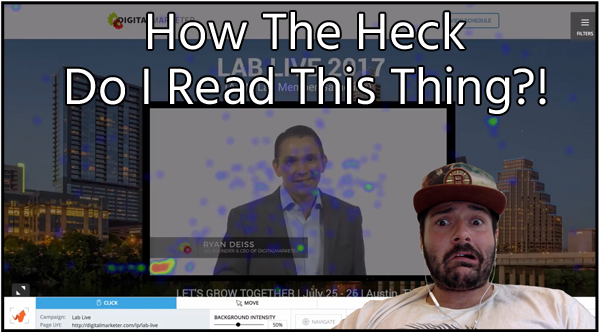Sometimes, we learn better from examples. So, today we wanted to show you some real-world examples of unique value propositions (both bad and good) and also point you to some helpful lessons you can learn from each of them to improve your conversion rates.
With that said, here are 30+ value prop examples and some nuggets you can take with you home:
Contents
#1. Integrate social proof to build customer trust
Social proof can help you create positive customer engagement around your offerings and build customer trust which will in turn boost your conversion. And one of the best places to use social proof is the value proposition.
Here’s an example of value proposition with social proof:

And another example:

#2. Use bullet points to show benefits/features
Bullet points are useful for listing the benefits/features your product or service offers and they are one of the main elements of great value propositions.
If your offering has more than a handful of benefits and you think it’s needful for customers to know them, bullet points may just be what you need to showcase those benefits in a creative and simple way.
Here’s an example:

#3. Offer multiple sign-up options
One of the ways to increase conversion is to unfetter your prospects when it comes to engaging with your website. Limiting them to just an option may not give you the best result.
But on the other hand, giving them some form of freedom and a chance to pick their best choice amongst a few available options can turn things around for your good.
This can be implemented during checkout, when picking their preferred delivery method, and even when signing up for your offering.
BrandYourself does this well with their multiple sign-up options:

#4. Show product photos to boot your value proposition
Using visuals to support your value propositions not only adds style and visibility to your offerings, but also helps to drive home the message you look to pass to customers.
Bucketfeet, the shoe designing experts, have different photos showcasing their artistic skills and creativity all over their website. But the good thing is they didn’t forget to include one of the product images in the value proposition area of their website, and you shouldn’t forget to do the same as well in your offering.

#5. Tell users what they can do with your offering
If you don’t tell them, who will?!
Without mincing words, you’re in the best position to tell them because you created the product, you best know what went into the creation of that product and you know how to describe it.
When telling users what to do with your product, you can go with a direct tone just like Caliber…

…or you may decide to keep it simple and short like KISSmetrics.

#6. Demonstrate the use of the product
Let potential users see it at work…
…and if the demonstration is really awesome and enticing, it’ll make them want to start using it too, right away.
Usually, you do this with your value proposition image.
Here goes the example:

And another:

7. Your value proposition should be clear
Clarity plays a major role in every high-converting value proposition.
So, if it seems users will not understand the value proposition within 5 seconds, you can as well fix your gaze on another conversion tool, but not the value proposition.
Also, if you’re looking to write a value proposition that rocks, don’t sound too oblivious like our CAT friends…
…Built For It.
Built for what?
Sounds like a type of slogan, but even if it were to be a slogan, the phrase is still very much as vague as a shadow.

Here’s what your value prop should look like if you built something for some folks:

#8. Write better value proposition headlines
The headline of the value proposition should be descriptive, engaging, and creative.
While CisionPoint’s value proposition headline (here: Social Software) solves the description part of the problem, I think this headline really isn’t engaging at all, not to mention being creative.

#9. Try personalized stories
You know, stories have a way of hooking people in; you just want to hear it. Moreso, when it is personalized, or when it concerns you.
Find a balance in your target audience. Pick a theme that will address their major need which your product/service can solve, a theme that will portray your offering in the best light, a theme that potential users can relate to.
And…
…tell a story.
Here’s an example you’d love:

#10. Keep the messaging on the headline and the CTA together
It doesn’t make sense to talk about smart bikes in the headline and ask visitors to “sign up for our mailing list” in the call to action (CTA).
If you opened the value proposition with an offering of adventure-ready smart bikes in the headline, then the CTA should follow suit; something like “Order for a smart bike today” with a value proposition booster like FREE DELIVERY written just below it.
Check out this example from Unbounce:
HEADLINE: Build, Publish & A/B Test Landing Pages Without I.T.
CTA: Build a High-Converting Landing Page Now

#11. Your headline and sub-headline shouldn’t say the “same” thing
The reason for a secondary headline in a value proposition is to give more details about an offering or about the main headline, which is always better being left short and sweet.
But, HighFive missed this one by saying the same thing both in the primary and secondary headlines, except that they replaced “your entire company” with “everyone.”

#12. No value proposition? You might lose sales
Except you’re selling computer devices and are well-known.

#13. Solve the time problem
Can your product or service help people do/become/have something on record time? If yes, integrate into the value proposition.
People tend to respond well to time-saving offers.
For instance, how about having groceries delivered to you in an hour? Sounds cool, huh?

Or maybe you want a cab in minutes.

#14. Talk about THEIR major concern
Your value proposition shouldn’t totally focus on talking about your awesomeness, even though you’re awesome. It should focus on the customers, their major concerns, their pain points and how your product/service can help solve those problems.
In this case, New Voice Media addresses their users’ concern which is to grow sales efficiently and serve customers better.

#15. Think twice before claiming the “#1” title in your industry
That sub-heading is quite clear so let take a look at some examples.
Sell smarter and faster with the world’s #1 CRM — Salesforce.

The #1 place to buy and sell websites, domains and mobile apps — Flippa

While Salesforce and Flippa are big players in their respective industries (and are feeling somewhat qualified to claim the #1 spot), you shouldn’t really follow that route especially if you’re just starting out.
#16. Include as many benefits as possible in the headline and sub-headline
If you were to look at your value prop with a heatmap tool, you’d almost certainly find that the headline receives the most hit.
As a result, it’s advisable you include as much benefit as you can in the headline, and go on to explain it with some more benefits in the secondary headline.
Shyp, the global shipment/delivery service provider nailed this, both in the headline and secondary wordings:

#17. Make the sign-up button obvious
If your value proposition requires a CTA button placed close to it, remember to make the button to be seen by all.
Slack’s sign-up button (at the top right corner) is not obvious enough.

In the screenshot example below, Social Crawlytics placed the sign-up button in an obvious position, used an eye-catching color and even made it easier for users to sign up using Twitter.

#18. Re-assure users that it’s risk-free
You can do this by adding a line of text just below your call to action button.
For instance, you can add such lines as:
- No credit card required
- No commitment
- We take your privacy seriously (Privacy policy)
- Live in seconds
- Set up in 3 simple steps
See Taco‘s example in action:

#19. Try the rule of 3
The rule of three (also, the power of three) is a writing method which states that things that come in threes are generally better, more satisfying, or more effective compared to other numbers of things.
The rule also states that those who come across this form of text is more likely to remember the information the text passed to them.
If you look around your environment, you’d find the rule of three virtually everywhere…
e.g Government of the people, by the people, for the people
Oftentimes, copywriters do use this rule in marketing messages to capture the attention of their audience.
e.g It’s not enough just to build a website. It’s not enough to create a landing page. It’s not enough to even have a great offer. If you want top results, you have to A/B test your web tools to see which performs best, and that you can do with TruConversion.
Bringing this home to our topic, here’s how Thought Plan applied the rule of three in their value proposition…
…you can try it out as well.

#20. Ask captivating questions
Want a top-performing value proposition? Ask a question that sticks to the brain like super glue on paper.
Questions have a way of capturing and keeping people’s attention. The right question makes readers stop for a moment and think out the answer.
And that’s a pretty good way to get into their heads fast; a way to address their concern, exactly; a way to strike just the right chord, and on time.
We use this question method over here at TruConversion. Take a look:

Yesware, the email tracking firm, also uses this method:

#21. Please don’t waste time and space welcoming people to your website
The value proposition is the first thing visitors should see when they visit your site…
…not some unnecessary, distraction-prone welcome message.
There’s really no website on the interwebs that do not wish to make their visitors feel welcomed. Visitors already know they’re welcomed; that’s why your site is open to them in the first place.
But sad to say some website owners do go the “extra mile” of saying welcome to our site.
That’s a waste of time and space and if you’re looking to make a sale, you should create a better first impression. Value proposition helps you make that awesome first impression.
See this:

And this:

Ugly, right?
Now, don’t get me wrong here; I understand when a big brand like Twitter says welcome.

The thing here is that Twitter’s welcome text is different. For one, they didn’t say “Welcome to our website” but “Welcome to Twitter” which means visitors might have already knew what Twitter is.
That goes to show the role of brand popularity here.
Also, Twitter’s welcome text is quickly followed by a brief but detailed copy, giving information on what you can do with Twitter, i.e, the benefits.
This is totally different from the two “welcome to our website” examples shown above.
#22. Use customer testimonial near your value proposition
This boils down to showing results and building customer trust, which all in turn boost conversion.

Conclusion
While you can use the lessons shared above to improve your conversion and grow your business, you don’t necessarily need to apply them all.
Just pick the ones that will work well for your business and implement EFFECTIVELY.
Ready to find out the truth about your website and equally boost your conversion? Try TruConversion today for free!


